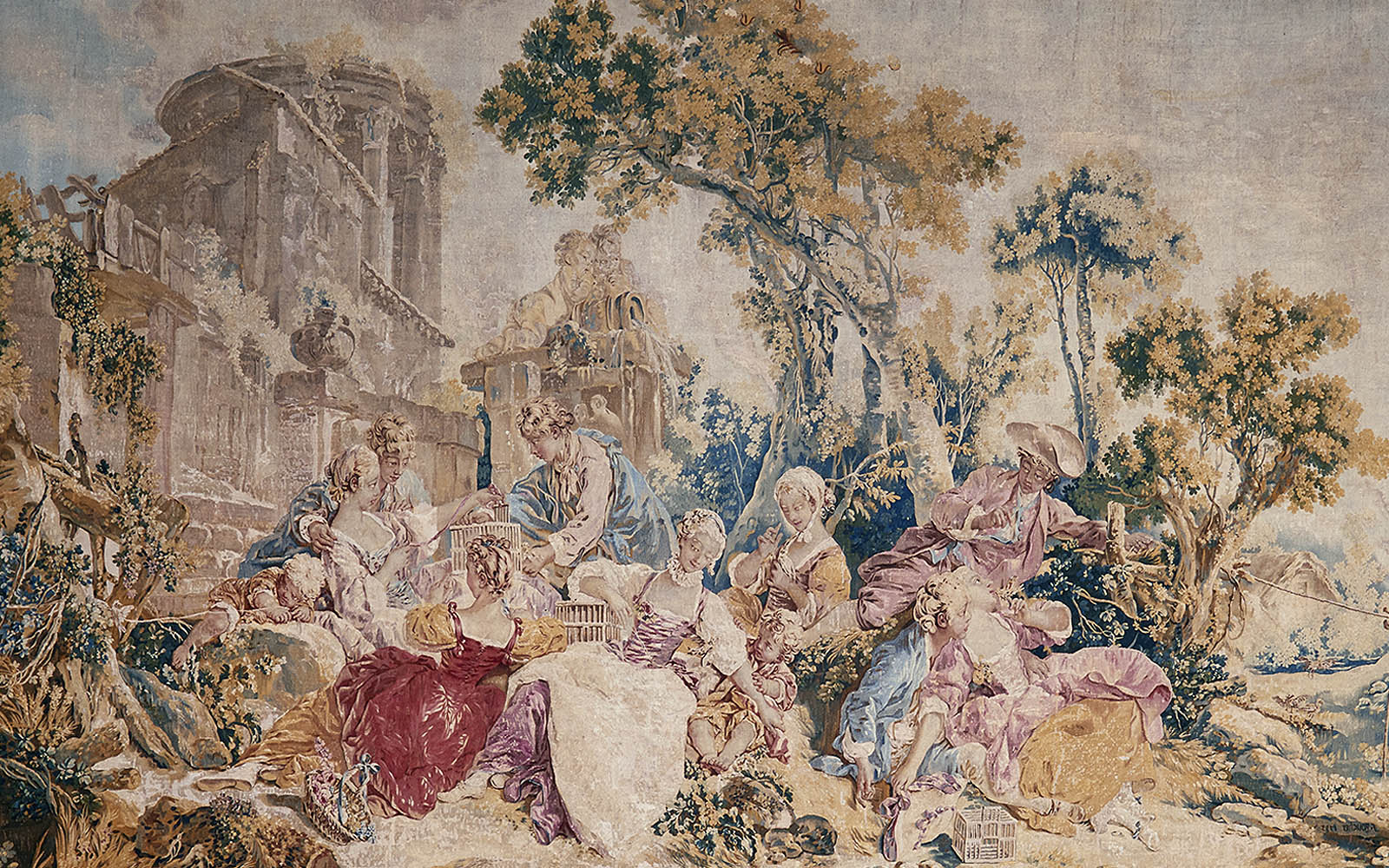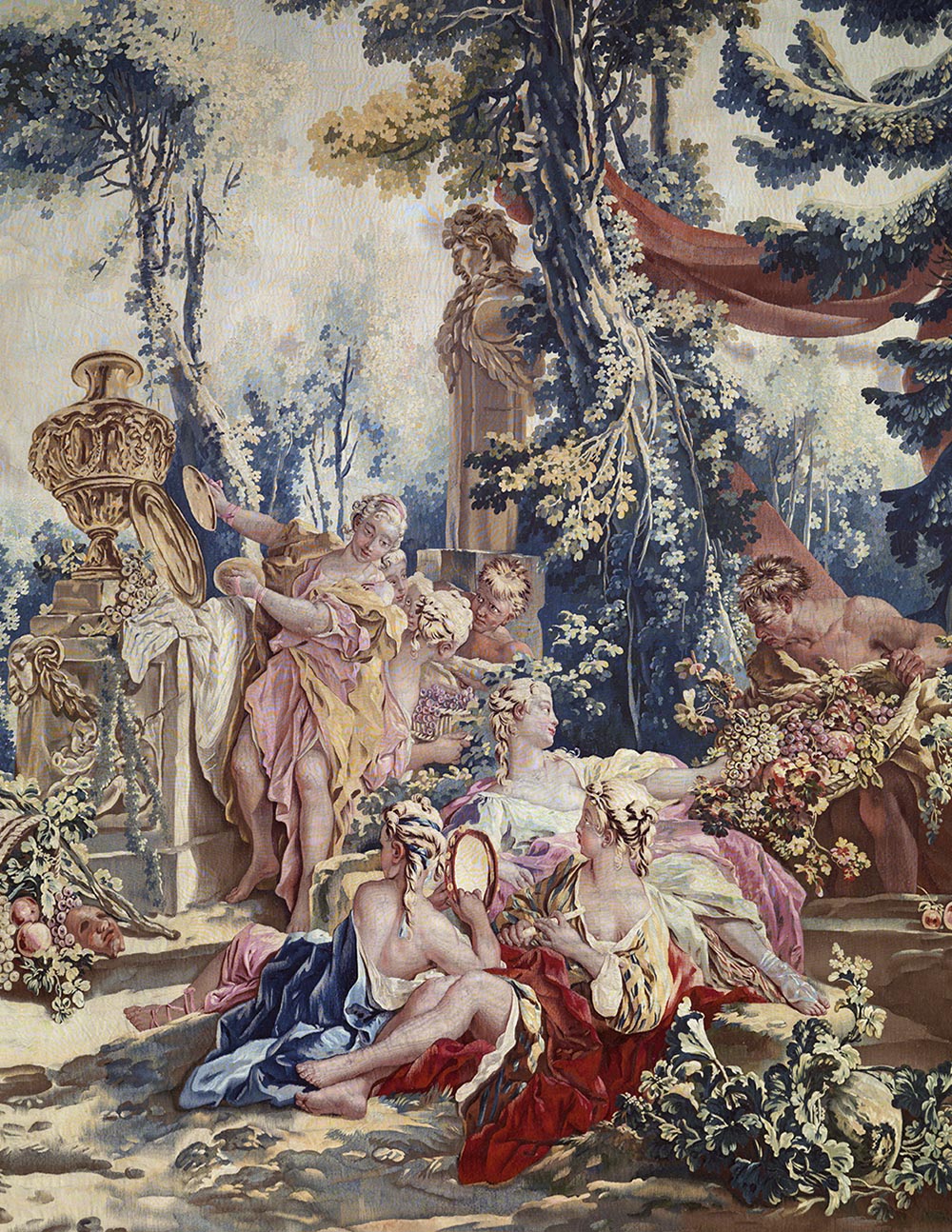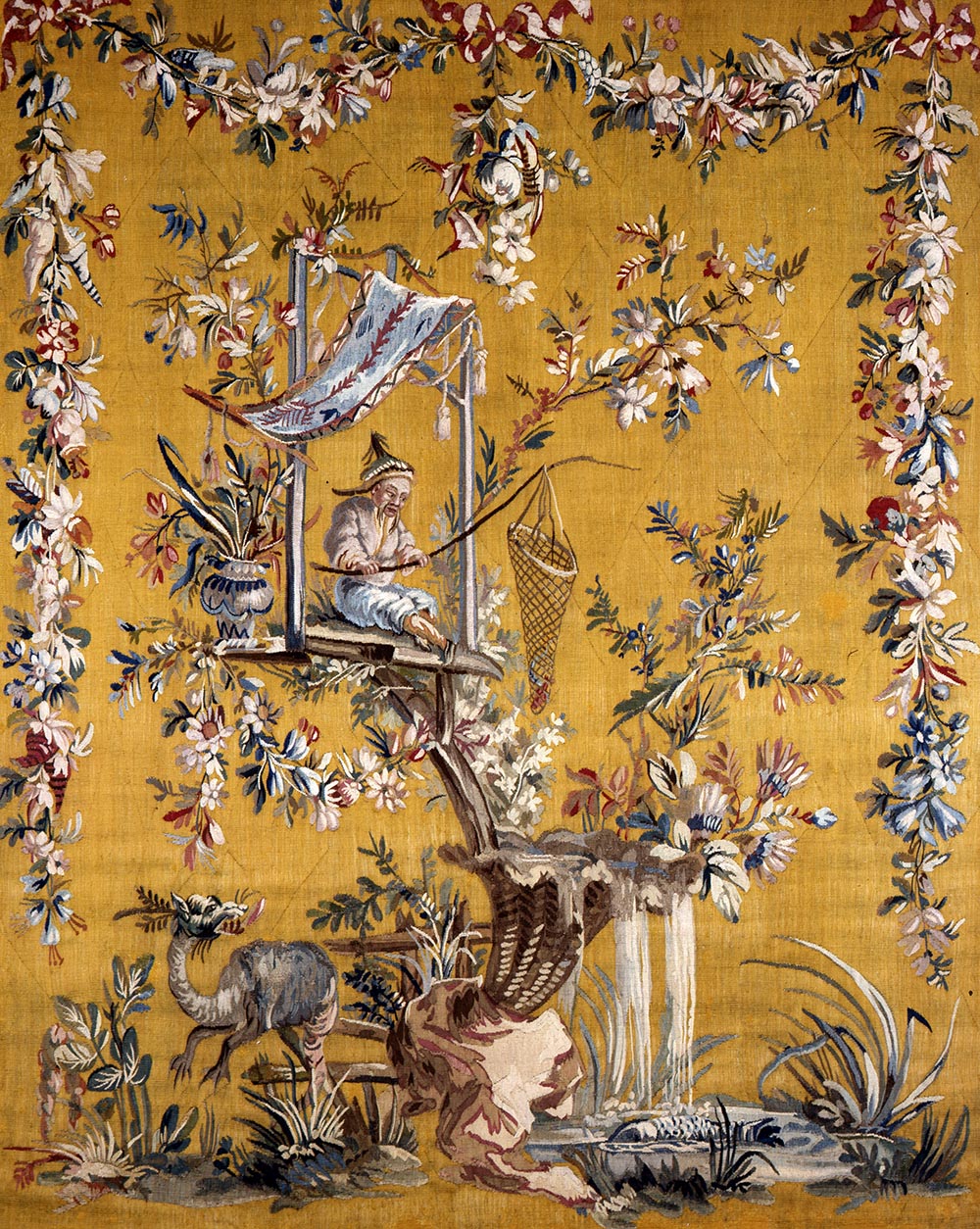Eighteenth-century textiles in the Gulbenkian collection

Along with furniture, textiles played a prominent role in eighteenth-century interiors.
The fabrics on display in the eighteenth-century gallery come from what was known as the Manufacture de Lyon. Silk production in Lyon reached its peak during this century, as a culmination of the momentum that had been building since the previous century, at the initiative of Colbert, a minister of Louis XIV.
This palpable vitality, in addition to better industrial organisation, technical advances, and the influence of Italian weavers who had settled in the country, were some of the factors that allowed this production to achieve an unprecedented level of quality and originality.
This can be seen in the silk fragment attributed to Philippe de Lassale, in a markedly Louis XV style, which came from the private chambers of Stanislas Leckzinsky, the father-in-law of the French monarch, at the Château de Lunéville. Another significant piece of fabric was commissioned for Marie Antoinette’s chambers in Versailles, revealing the height of sophistication of Lyonnaise production at the time.
Floral decoration, very much to the queen’s taste, is a dominant characteristic. However, from 1760 onwards, the classically influenced arabesque style began to be more commonly used. Jacques Gondoin, the king’s architect, designed this composition of arabesque acanthus scrolls punctuated with appliqué medallions. It was produced by Jean Charton, a master of textiles from a renowned family of weavers in Lyon.

Tapestries also played an important role in interior decoration during this period. With the increasing awareness of the idea of comfort, these objects were vital in making rooms more welcoming. Mythological subjects were often used and served as a theme for scenes of fêtes galantes and amorous narratives.
These bucolic and romantic representations had a strong decorative component that produced a scenic effect that was very popular at the time. François Boucher was one of the painters who most explored this theme with, among others, the tapestry cartoons Jupiter en raisin and La Pipée aux Oiseaux, exhibited in the gallery.

A taste for the exotic was also cultivated during this period and provided a source of inspiration for many artists. With the development of trade with East Asia, many objects from China and Japan reached Europe, leading to the emergence of diverse decorative motifs of oriental inspiration.
Their visual lightness, movement, and asymmetry combined harmoniously with the Rococo style. The French painter and engraver Jean Pillement developed this theme magnificently, as demonstrated by the set of chinoiserie tapestries also on display.
Clara Serra
Curator of the Calouste Gulbenkian Museum